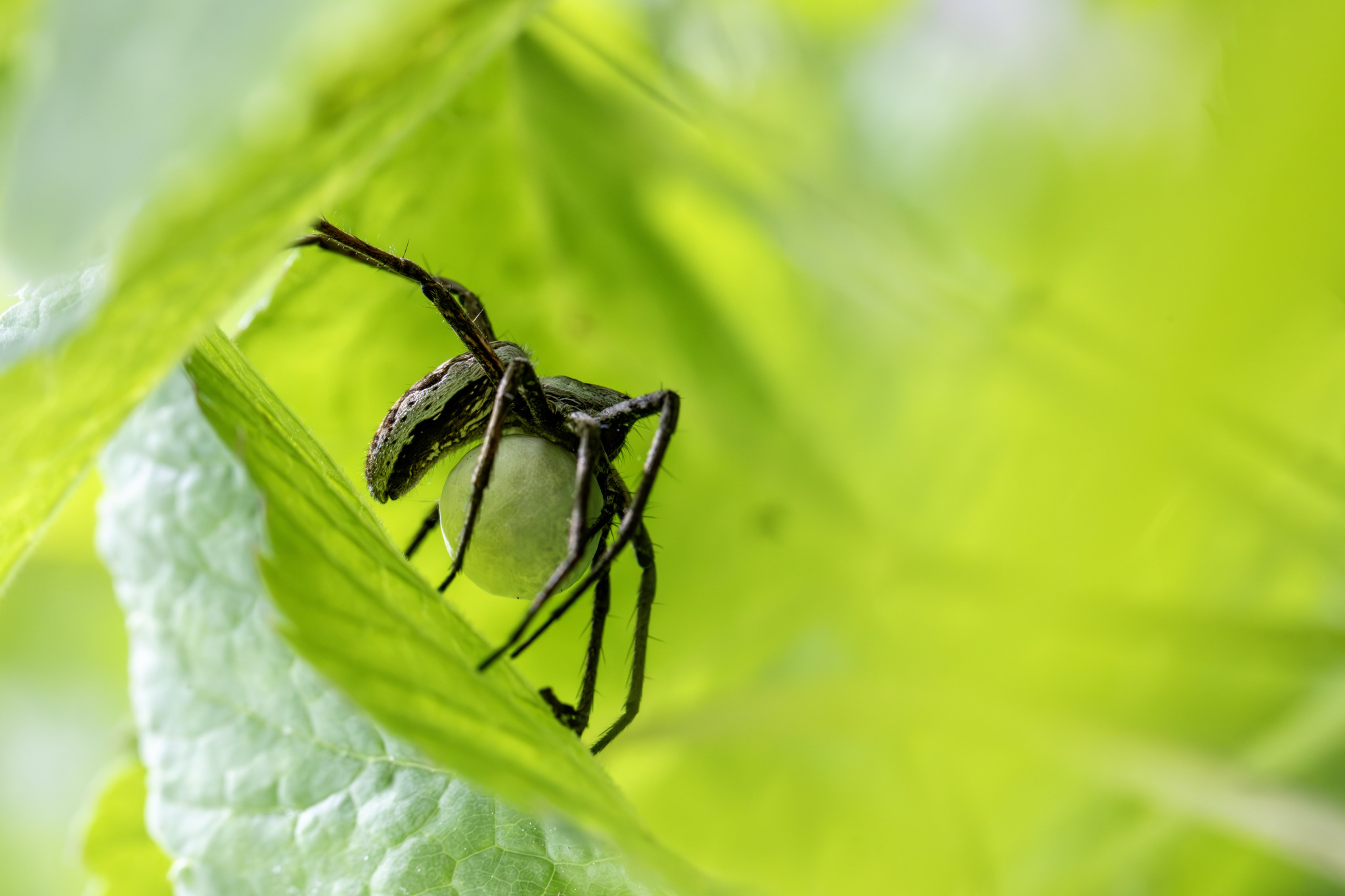The European Nursery Web Spider (Pisaura mirabilis) is a fascinating and adaptable arachnid belonging to the family Pisauridae. Known for its unique reproductive behavior, particularly the construction of nursery webs, this spider is commonly found in meadows, hedgerows, and gardens across Europe.
Physical Description
- Size:
- Females: 12–15 mm.
- Males: 10–13 mm.
- Coloration:
- Brownish-gray with a distinct pale stripe running along the body’s center.
- Subtle chevron markings on the abdomen.
- Shape:
- Long legs and a slender body.
- Eyes are arranged in two rows, giving them excellent vision.
Behavior
- Hunting:
- Active hunters that rely on stealth and speed instead of webs to catch prey.
- Prey includes insects and other small invertebrates.
- Daytime Activity:
- Often seen basking in the sun on vegetation or patrolling for prey.
- Reproductive Behavior:
- Males present a gift-wrapped prey item (wrapped in silk) to females during courtship to reduce the risk of being attacked.
Habitat
- Found in a variety of habitats, including:
- Grasslands and meadows.
- Woodland edges and hedgerows.
- Gardens and areas with dense vegetation.
Life Cycle
- Mating:
- Occurs in spring; males use silk-wrapped prey to court females.
- Egg Sac:
- Females carry the egg sac in their chelicerae (mouthparts) for protection.
- Nursery Web:
- Before the spiderlings hatch, the female builds a silk nursery web in vegetation to house the egg sac and guard the young.
- Spiderlings:
- Hatch within the nursery web and disperse after a short period.
Distribution
- Common across Europe, parts of Asia, and North Africa.
- Thrives in temperate climates with diverse vegetation.
Conservation Status
- Classified as Least Concern, with stable populations in suitable habitats.
- May be affected locally by habitat loss due to agricultural practices and urbanization.
Ecological Role
- Pest Control:
- Feeds on various insects, helping to regulate populations of agricultural pests.
- Prey:
- Serves as food for birds, amphibians, and larger predators in the ecosystem.
Interesting Facts
- Unique Parenting:
- The female’s care of the egg sac and spiderlings is relatively rare among spiders.
- Mimicry in Mating:
- Some males may present empty silk-wrapped prey to deceive females during courtship.
- Non-Aggressive:
- Despite their size, they are generally harmless to humans and will flee when disturbed.
Summary
The European Nursery Web Spider (Pisaura mirabilis) is a remarkable arachnid, known for its intricate reproductive strategies and ecological importance. Its adaptability and role in pest control make it a valuable member of natural ecosystems, while its nursery web behavior provides a fascinating glimpse into spider parenting. Protecting its habitats ensures the continued presence of this intriguing species.
Visited 544 times, 27 visit(s) today
Views: 621
Subscribe to the newsletter:
